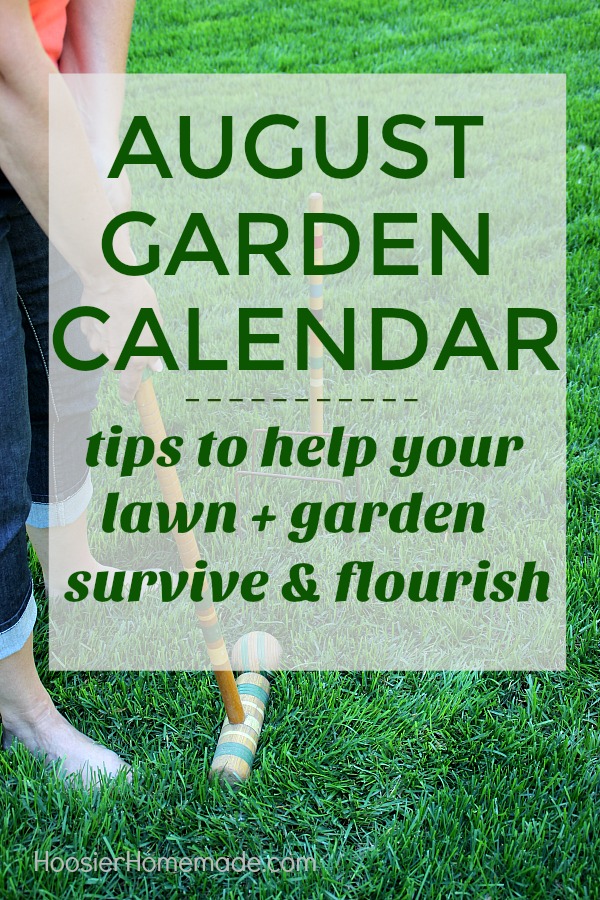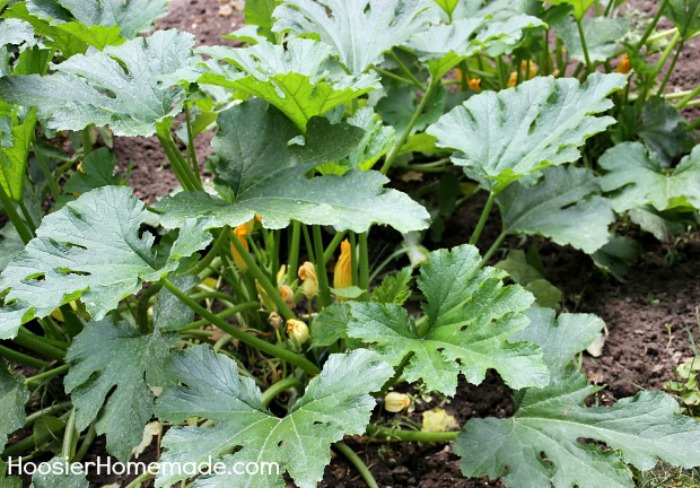Garden Calendar for August

The summer heat of August can take a toll on your lawn and garden. Don’t fret though we have a comprehensive list of chores for your lawn and landscape that will help you and all your hard work in your yard survive the summer heat. Click here for your FREE garden and landscape journal- the first step to gardening success!
As we get ready for Fall, planting spring bulbs and other perennials, August chores are a lot like July. There is still a lot of work to do to make our lawn and garden survive and flourish.
Lawn
August can be brutal on your lawn so it’s critical to take extra precautions this month
- Watering
Make sure everything is getting enough water, about an inch per week for lawns- more in extreme heat and drought. Water in the early morning to minimize evaporation and use a timer to prevent over-watering if you tend to forget you have the water going like I do. - Maintain your mowing height
Make sure you are cutting your grass at least 3”, I will raise my mowing height as high as 3 1/2″ even 4″ during the summer. The little longer grass shades the roots of the grasses to keep them cooler and your soil will retain moisture better. Plus your lawn will require less sprinkling. - Repair bare spots
When summer starts to cool and the soil is still good and warm, which could be mid August. - Prepare large areas for seeding or soding Late August and all of September are perfect times for major lawn renovations. Use the month of August to get the area prepped.
- Fertilize the lawn
You should be due to fertilize your lawn. If you are, apply it during the first part if July. Also use this time to look for any dead spots and check them for grubs. A well fertilized lawn will survive heat much better. - Watch for Powdery Mildew
When summer starts to cool and the soil is still good and warm, which could be mid August or early September, lawn seed or sod will establish quickly. - Check for grubs
If dead patches of grass will pull up like a loose piece of sod, you probably have grubs. If the problem is widespread, treat with non toxic milky spore, or grub control chemicals. Don’t worry about a small problem, your lawn should recover with enough water.
In mid July, Liz visited the Better Homes and Garden headquarters, and she took a few photos of the test gardens. They are simply gorgeous!
Landscape and Flower Beds
- Monitor newly planted plants
If the weather turns dry, keep them well watered. New plants should receive 1 to 1.5 inches of water every week. - Don’t fertilize woody plants now.
It stimulates late growth that will be susceptible to winter damage. - Check hanging baskets and window boxes
Hanging baskets and window boxes dry out quickly and need frequent watering. They will also need to be fertilized regularly, at least once a month with a liquid fertilizer. - Plant perennials The end of August is an excellent time to plant perennials. The weather is perfect for establishing roots.
- Continue deadheading annuals Keep your annuals blooming by deadheading right up to frost.
Gardens
- Harvest
Many of your vegetables will be ready for harvest by now. Beans should be ready this month and tomatoes and peppers should be ready by the middle of the month. - Mulch vegetables
As you harvest and plants whither the canopy gets smaller letting more light hit the soil. Apply a thick layer of mulch to help control weeds and conserve moisture. - Watering
Gardens will require 1 to 1 1/2″ of water per week. A regular, deep watering is best. - Check container gardens
Container gardens dry out quickly and need frequent watering where a container watering system is recommended. They will also need to be fertilized regularly. - Weed
Keep weeding to prevent a weed crop the competes with your plants for water and nutrients. - Don’t apply pesticides
During the summer heat, avoid applying pesticides, even insecticidal soaps. If you must, apply on a cool evening.


